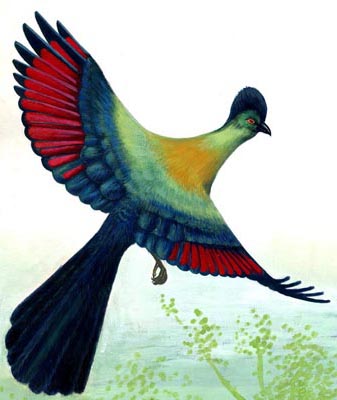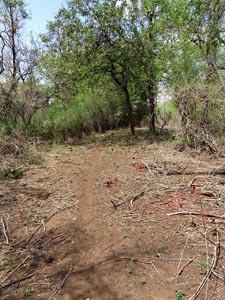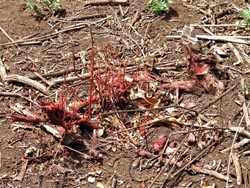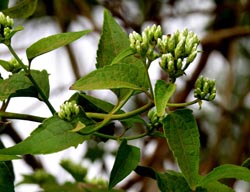The ENTC now has a new website, at www.entc.org.sz
Our logo is adapted from a painting by Phillip Dlamini, 1998, of a purple crested turaco. In traditional Swazi dress, the red feathers feature in the royal headdress, so this bird illustration is not only a symbol for wildlife conservation, but also of cultural heritage.



(Contributed by Ngwane Dlamini, Senior Warden, Mlawula)
Culling is done on the basis of the population estimates as per the recommendations of SNTC ecologist and is usually staggered all year round.
The challenges here are to conduct the culling operation without interfering with the on going park tourism initiatives; avoiding vehicle shyness of the animals to promote game viewing; and totally avoid noise from the rifle from tourists and signs of the operation.
Culling is normally done at night at specific sights of the park. Most appropriate done when there are no visitors in the park, with a low noise caliber of rifle such a point .22 or .223.
The park occasionally encounters some fires coming from its neighboring communities. Other fires are started internally deliberatively some by poachers. Sometimes we encounter natural fires cause by lighting. Management focus on protecting its building and other properties by at annual basis establishing protective fire breaks round each the leaving compounds, offices and weather station.
On the use of fire as a management tool, we have managed to strategically create some block burns. This are normally created early in the dry season to prevent to encourage reduced intensity and are repeated once in every four years.
We still have a great concern for the uncontrolled fires, which happens every year across the Ndzandza Mahlabashane mountains.

The reserve has 3 most problematic alien species namely Parthenium hysterophorus, Chromolaena odorata and Lantana camara. Though not adequately controlled, much focus has been given Chromolaeana odorata due to national influence. Apart from these species there is a total of over 50 different species that are considered alien plants in the reserve. Chromolaena alone has been recorded as affecting a total of 35% of the total park area.
There is an ongoing programme of cutting and burning to control alien plants.


Challenges associated with this programme include inadequate budget for the purchase of herbicides, insufficient manpower, inadequate equipment (picks, bush knives, slashers), insufficient alien plant research, and a lack of policy with regard to invasive species prevention and control measures.
Routine park maintenance activities are carried out by 8 staff members, and include road repairs and maintenance, building and plumbing repairs and maintenance, and alien plant control.
Upon realizing that the rate of poaching has always been increasing in recent years the reserve adopted the following strategies:
Animals targeted by the poachers are impala, wildebeest, kudu and warthogs. They on rare occasion go for Nyala, bushbucks, zebras and other species. A couple of poachers were caught for cutting ironwood poles and were all residents of Mozambique, when asked why they were cutting they all indicated they wanted them for making coal.
Our Contacts:
Head Quarters: (+268) 2416 1489/1179
Email: info@sntc.org.sz
King Sobhuza II Park: (+268) 2416 1489/1179
Email: ksmp@sntc.org.sz
National Museum: (+268) 2416 1489/1179
Email: curator@sntc.org.sz
Copyright © ESWATINI NATIONAL TRUST COMMISSION
Malolotja Nature Reserve: (+268) 2444 3241 / (+268) 2416 1480
Email: culturalvillage@sntc.org.sz
Mantenga Nature Reserve and Swati Cultural Village: 2416 1151/1178
Email: culturalvillage@sntc.org.sz
Mlawula Nature Reserve: (+268) 2383 8885 (Reception)
(+268) 2383 8453 (Senior Warden)
Email: culturalvillage@sntc.org.sz
Magadzavane Lodge: (+268) 2343 5108/9
Email: magadzavane@sntc.org.sz